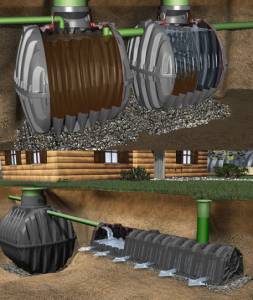Description
Anaerobic Treatment: Efficient Wastewater Treatment Solution
Anaerobic treatment is a biological wastewater treatment process that breaks down organic matter in the absence of oxygen. This process utilizes microorganisms called anaerobic bacteria that thrive in oxygen-deficient environments. This innovative technology offers a cost-effective and environmentally friendly alternative to traditional aerobic methods, producing biogas as a valuable byproduct.
How it Works:
Anaerobic treatment typically involves a multi-stage process:
- Hydrolysis: Complex organic molecules (carbohydrates, proteins, lipids) are broken down into simpler soluble compounds by extracellular enzymes produced by anaerobic bacteria.
- Acidogenesis: Acidogenic bacteria ferment the simpler compounds, producing volatile fatty acids (VFAs), alcohols, hydrogen, and carbon dioxide. This stage results in a decrease in pH.
- Acetogenesis: Acetogenic bacteria convert the VFAs, alcohols, and hydrogen into acetate, carbon dioxide, and hydrogen.
- Methanogenesis: Methanogenic archaea utilize acetate, carbon dioxide, and hydrogen to produce methane (CH₄) and carbon dioxide (CO₂). This biogas mixture can be captured and used for energy generation.
Advantages of Anaerobic Treatment:
- Reduced Sludge Production: Anaerobic digestion produces significantly less sludge than aerobic treatment, minimizing disposal costs and environmental impact.
- Biogas Production: The process generates biogas, a renewable energy source that can be used for heat and power generation, reducing reliance on fossil fuels.
- Lower Energy Consumption: Anaerobic treatment requires less energy compared to aerobic methods, leading to reduced operational costs.
- Reduced Greenhouse Gas Emissions: Compared to aerobic processes, anaerobic digestion significantly reduces greenhouse gas emissions. Methane, while a potent greenhouse gas, is captured and utilized, rather than released into the atmosphere.
- Effective for High-Strength Wastewaters: Anaerobic treatment is particularly effective in treating high-strength wastewaters with high organic loads, such as wastewater from food processing, agricultural industries, and landfills.
- Nutrient Removal: While not as efficient as some advanced aerobic processes, anaerobic digestion can contribute to nitrogen and phosphorus removal.
Applications:
Anaerobic treatment finds applications in various sectors:
- Wastewater Treatment Plants (Municipal and Industrial): Used as a primary or secondary treatment process for a wide range of wastewater streams.
- Agricultural Industries: Treatment of manure and other agricultural wastewaters.
- Food Processing Industries: Effective treatment of high-strength organic wastewaters.
- Landfills: Used for the treatment of leachate from landfills.
Types of Anaerobic Reactors:
Several types of anaerobic reactors are available, each with its own design and operational characteristics:
- UASB (Upflow Anaerobic Sludge Blanket) reactors: High-rate reactors characterized by a sludge blanket that promotes efficient microbial activity.
- EGSB (Expanded Granular Sludge Bed) reactors: Similar to UASB but utilizes granular sludge for improved stability and settling.
- AFBR (Anaerobic Fluidized Bed Reactor): Uses a fluidized bed of inert media to support biofilm growth.
- CSTR (Continuous Stirred Tank Reactor): A well-mixed reactor suitable for treating less concentrated wastewaters.
Considerations:
- Process Stability: Anaerobic processes are sensitive to changes in pH, temperature, and organic loading rates. Proper monitoring and control are essential.
- Start-up Time: Establishing a stable anaerobic process can take time, typically several weeks to months.
- Process Expertise: Effective operation requires specialized knowledge and expertise.
Conclusion:
Anaerobic treatment presents a sustainable and cost-effective solution for wastewater management and resource recovery. Its ability to reduce sludge production, generate renewable energy, and minimize environmental impact makes it an increasingly attractive alternative to traditional wastewater treatment methods. The choice of the specific anaerobic reactor type depends on factors such as wastewater characteristics, treatment goals, and site-specific constraints.
